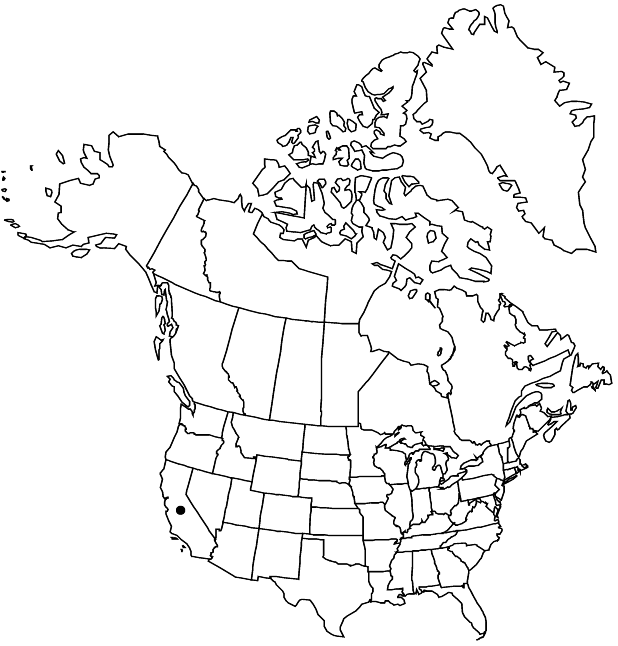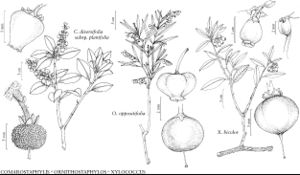Difference between revisions of "Comarostaphylis diversifolia"
Bull. Calif. Acad. Sci. 2: 406. 1887 ,.
FNA>Volume Importer |
imported>Volume Importer |
||
| (3 intermediate revisions by 2 users not shown) | |||
| Line 7: | Line 7: | ||
}} | }} | ||
|common_names=Summer-holly;mock arbute or arbutus;summer-blooming-manzanita | |common_names=Summer-holly;mock arbute or arbutus;summer-blooming-manzanita | ||
| + | |special_status={{Treatment/ID/Special_status | ||
| + | |code=F | ||
| + | |label=Illustrated | ||
| + | }} | ||
|basionyms={{Treatment/ID/Basionym | |basionyms={{Treatment/ID/Basionym | ||
|name=Arctostaphylos arguta var. diversifolia | |name=Arctostaphylos arguta var. diversifolia | ||
|authority=Parry | |authority=Parry | ||
| + | |rank=variety | ||
|publication_title=Proc. Davenport Acad. Nat. Sci. | |publication_title=Proc. Davenport Acad. Nat. Sci. | ||
|publication_place=4: 35. 1884 | |publication_place=4: 35. 1884 | ||
| Line 16: | Line 21: | ||
|name=Arctostaphylos diversifolia | |name=Arctostaphylos diversifolia | ||
|authority=(Parry) Parry ex A. Gray | |authority=(Parry) Parry ex A. Gray | ||
| + | |rank=species | ||
}} | }} | ||
|hierarchy=Ericaceae;Ericaceae subfam. Arbutoideae;Comarostaphylis;Comarostaphylis diversifolia | |hierarchy=Ericaceae;Ericaceae subfam. Arbutoideae;Comarostaphylis;Comarostaphylis diversifolia | ||
| Line 53: | Line 59: | ||
-->{{#Taxon: | -->{{#Taxon: | ||
name=Comarostaphylis diversifolia | name=Comarostaphylis diversifolia | ||
| − | |||
|authority=(Parry) Greene | |authority=(Parry) Greene | ||
|rank=species | |rank=species | ||
| Line 64: | Line 69: | ||
|publication title=Bull. Calif. Acad. Sci. | |publication title=Bull. Calif. Acad. Sci. | ||
|publication year= | |publication year= | ||
| − | |special status= | + | |special status=Illustrated |
| − | |source xml=https:// | + | |source xml=https://bitbucket.org/aafc-mbb/fna-data-curation/src/2e0870ddd59836b60bcf96646a41e87ea5a5943a/coarse_grained_fna_xml/V8/V8_756.xml |
|subfamily=Ericaceae subfam. Arbutoideae | |subfamily=Ericaceae subfam. Arbutoideae | ||
|genus=Comarostaphylis | |genus=Comarostaphylis | ||
Latest revision as of 22:46, 5 November 2020
Shrubs or trees, to 6(–9) m, capable of stump-sprouting; lignotuber sometimes present, to 1.3 m diam. Young twigs gray-tomentose. Leaves horizontally oriented; petiole 0.2–2 cm, gray-tomentose; blade 3–12.8 × 1–4.2 cm (to 14.9 × 8.1 cm on sucker shoots), base tapering to cuneate, apex obtuse to acute; venation pinnate. Inflorescences 3.5–14 cm, usually gray-tomentose, rarely with stalked, swollen-headed, glandular hairs; floral bracts solitary at bases of pedicels, lanceolate-linear or lanceolate-ovate to oblong-ovate, plane to navicular, 2–10 mm. Pedicels often curved, 4–20 mm; bracteoles usually basal, rarely higher, often reduced, acicular to narrowly triangular, to 3 mm. Flowers: sepals appressed to corollas during flowering, becoming spreading to reflexed in fruit, equal or nearly so, much shorter than corolla tube, 2–3.5 × 0.8–1.7 mm, apex acute to acuminate, gray-tomentose, rarely with glandular hairs; petals spreading or recurved, corolla 5–8 × 3.5–5.5 mm, glabrous or puberulent, lobes obtuse, 0.9–1.3 × 1.4–1.8 mm; nectary weakly 10-lobed or -ribbed; stamens 2.6–3.6 mm; filaments 2.3–3.4 mm, villous; anthers ovoid, 1–1.6 mm, awns 0.6–1.1 mm; ovary villous; style often persistent, included or slightly exserted, 3–5.3 mm, glabrous or hairy; stigma minute. Drupes 5–7 mm diam. Seeds pendulous by persistent, gray, short, caplike funiculus, 2.2–2.3 × 1–1.4 mm; testa thick-walled, reticulate. 2n = 26.
Distribution

Calif., nw Mexico.
Discussion
Subspecies 2 (2 in the flora).
Comarostaphylis diversifolia is sometimes cultivated and is the only species in the genus commonly used horticulturally. H. E. McMinn (1949), P. A. Munz (1950), and M. G. Schmidt (1980) gave detailed discussions of horticultural considerations. It tolerates full sun and clay soil, and is suitable for bird and butterfly gardens. Subspecies discolor has been used medicinally (for insomnia) and its fruit is considered edible by some. P. C. Standley (1920–1926) stated that the fruits or leaves have narcotic properties: children apparently have been poisoned by the fruit, and the plant has been used for inducing sleep or as a purgative.
This species is the most distinctive member of the genus, easily recognized by the unique red fruits (nearly black to dark purple in all other species), the narrow sepals, and the usually gray-tomentose inflorescences. It is also unique in range, being geographically isolated from the rest of the genus, and in elevation, being the only species found below ca. 1350 meters. The two allopatric subspecies differ primarily in leaf and inflorescence morphology.
Selected References
None.
Lower Taxa
Key
| 1 | Leaf margins usually strongly revolute; inflorescences 3.5-8 cm; Orange and San Diego counties, California; n Baja California. | Comarostaphylis diversifolia subsp. diversifolia |
| 1 | Leaf margins usually plane; inflorescences 6-14 cm; Los Angeles and Santa Barbara counties, California. | Comarostaphylis diversifolia subsp. planifolia |
